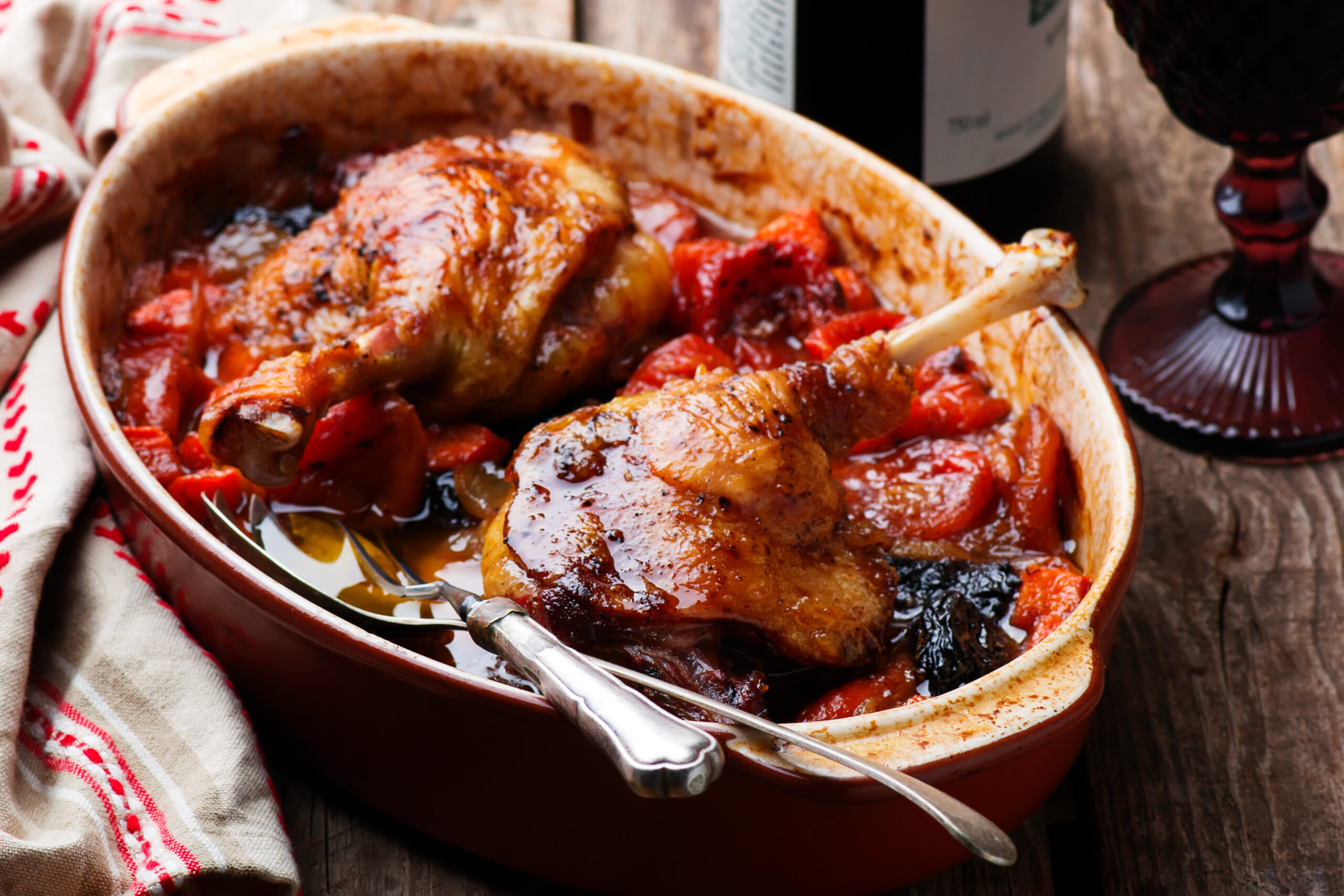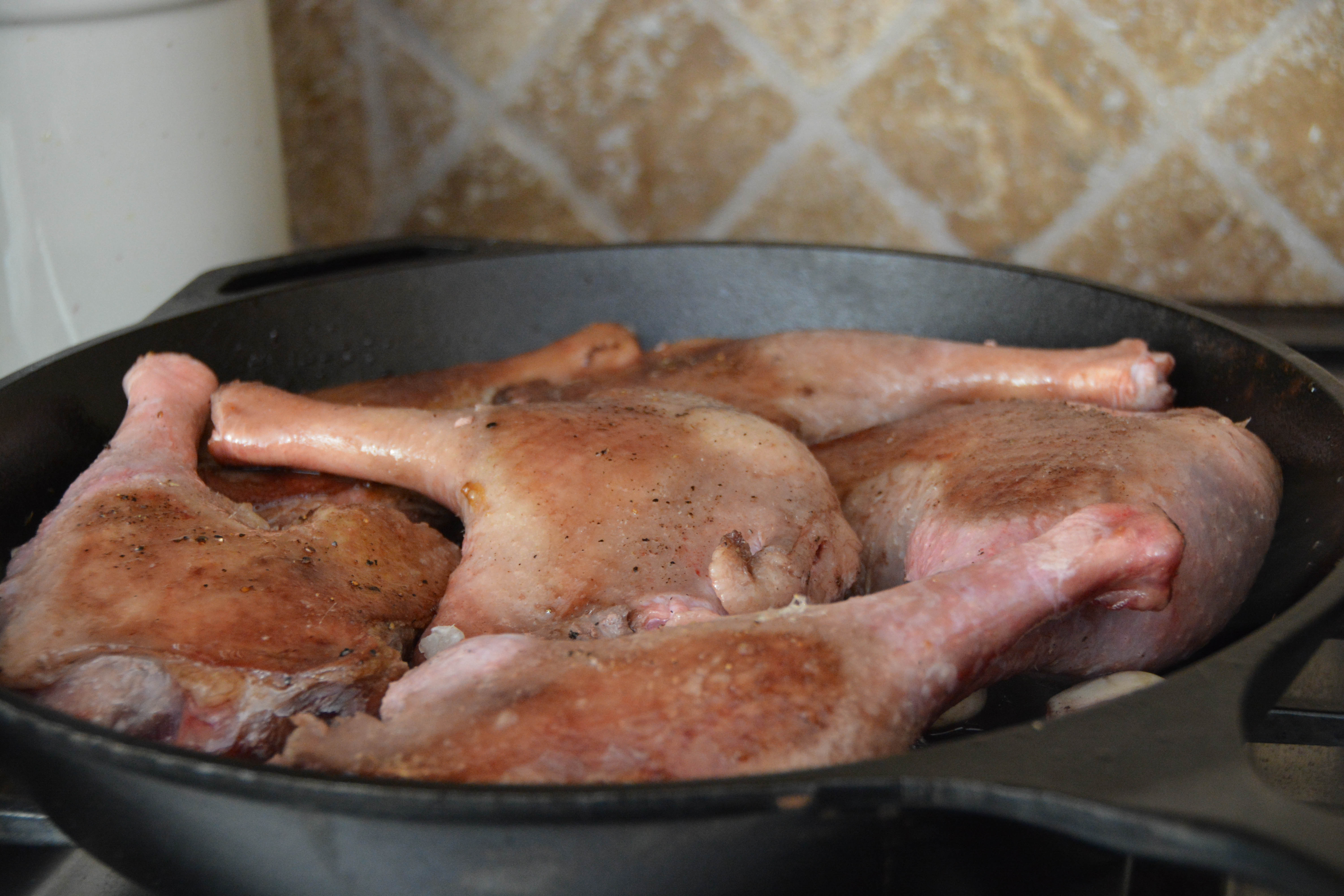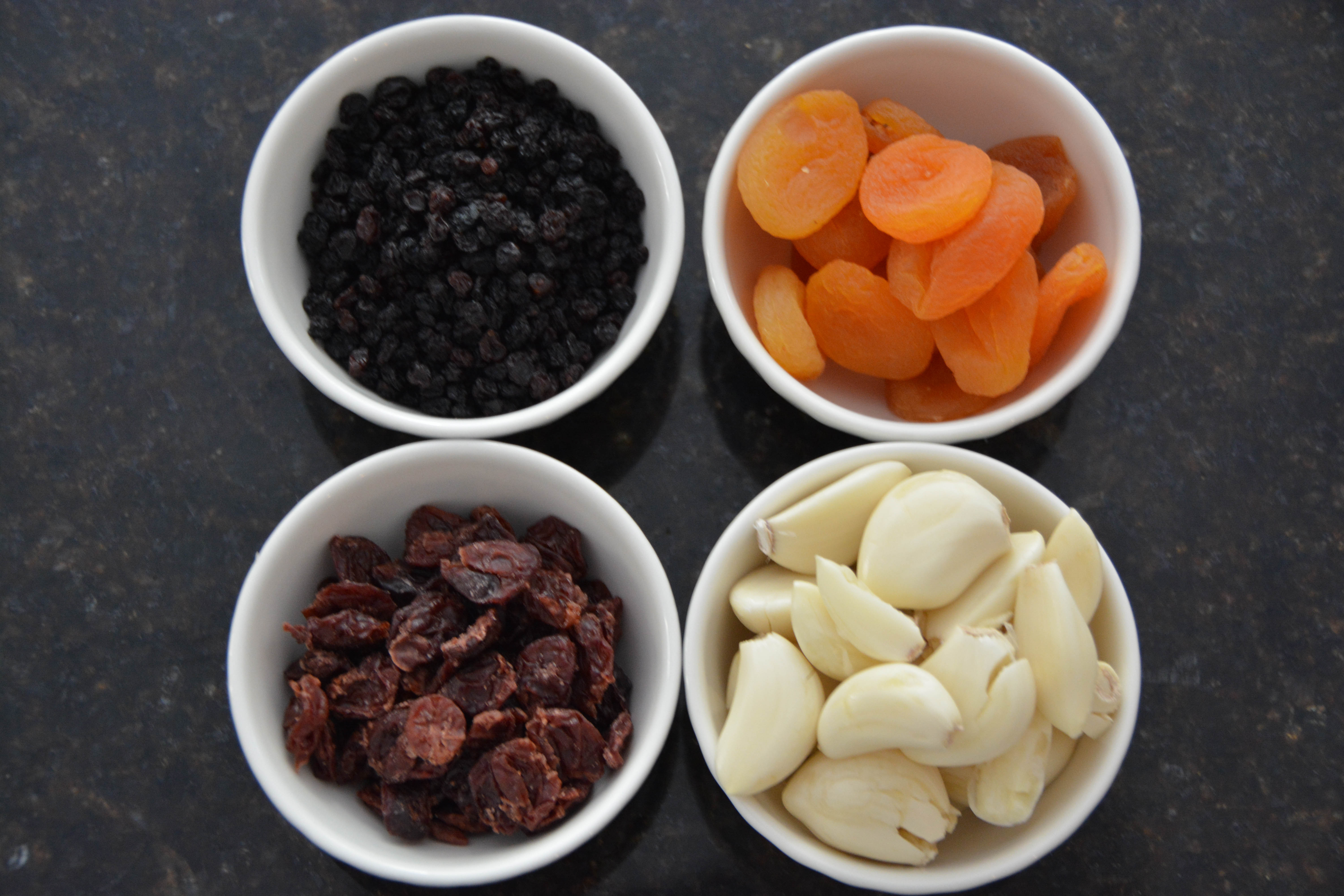Duck confit is probably my favourite preparation of le canard, but it involves a lot of fiddling around with copious quantities of duck fat, which is messy, expensive and can be difficult to procure—better to just have it when dining at a great French bistro.
This braised method produces a very tender and intensely flavourful dish. Slowly cooking the legs leaves the meat falling off the bones, and the dried fruit adds beautiful sweet notes. You don’t get the wonderful crisp skin of duck confit, but you can’t have everything!
- Browning the duck legs
- The red wine, fruit and garlic
- The dried fruit and garlic

Red Wine Braised Duck Legs with Dried Fruit
This method of cooking duck legs produces a very tender and intensely flavourful dish. Slowly braising the legs leaves the meat falling off the bones; the dried fruit adds beautiful sweet notes.
Ingredients
- 8 duck legs, thighs attached (each about 227 g or 8 oz), trimmed of excess fat
- Kosher salt and freshly ground black pepper
- 30 ml or 2 tbsp olive oil
- 500 ml or 2 c dry red wine
- 320 g or 2 c chopped mixed dried fruit (I used dried cherries, apricots and currants in equal proportions)
- 2 heads of garlic, cloves separated, smashed gently with the side of a knife and peeled
- 2 g or 2 tsp dried thyme
- 2 litres or 8 c chicken stock
- 5 ml or 1 tsp fresh lemon juice
Instructions
- Preheat the oven to 325°F convection roast or 350°F without convection.
- Season the duck legs all over with kosher salt and ground pepper
- In two deep skillets, preferably cast iron, (I used a 15″ and an 8″) over medium heat, warm the oil. Add the duck legs, skin side down, and cook until the skin is golden brown and crisp (9–12 minutes). Flip and cook until browned on the other side,(5 minutes more). Remove the legs from the pan and pour off the fat.
- Return the skillet to the stove, add the wine, and scrape up any browned bits on the bottom of the pan. Boil until reduced by half (1 to 2 minutes). Add 1 cup of dried fruit, garlic and thyme. Return the legs to the skillet skin side up and transfer to the oven. Before closing the oven door, carefully pour enough broth around the legs to come about 2/3 of the way up the sides. Braise, adding more broth if necessary to maintain the level, until the meat is fork-tender, about 2 hours. You may need to cover the skillets with foil partway through the braising to prevent them from becoming overly brown.
- Transfer the duck legs to a platter, loosely cover with foil, and keep warm.
- Pour the liquid from the skillet through a sieve into a large pan. Let stand until the fat separates from the liquid. Ladle off the fat. If you have sufficient time, put the juices in the fridge and skim off the remaining hardened fat (see note below)
- Boil until reduced to about 1½ cups (5 to 10 minutes). Add the remaining 1 cup of dried fruit. Simmer the sauce until the fruit softens (5 minutes). Season to taste with salt, pepper, and a splash of lemon juice. Serve the duck with the sauce.
Notes
- In preparing this dish, try to allow sufficient time for the duck legs to rest and the fat from the juices to separate. I left about an hour, put the juices in the refrigerator and skimmed off the hardened fat. I gently reheated the duck legs in the oven at 300°F before serving.
Nutrition
- Serving Size: Serves 8.




